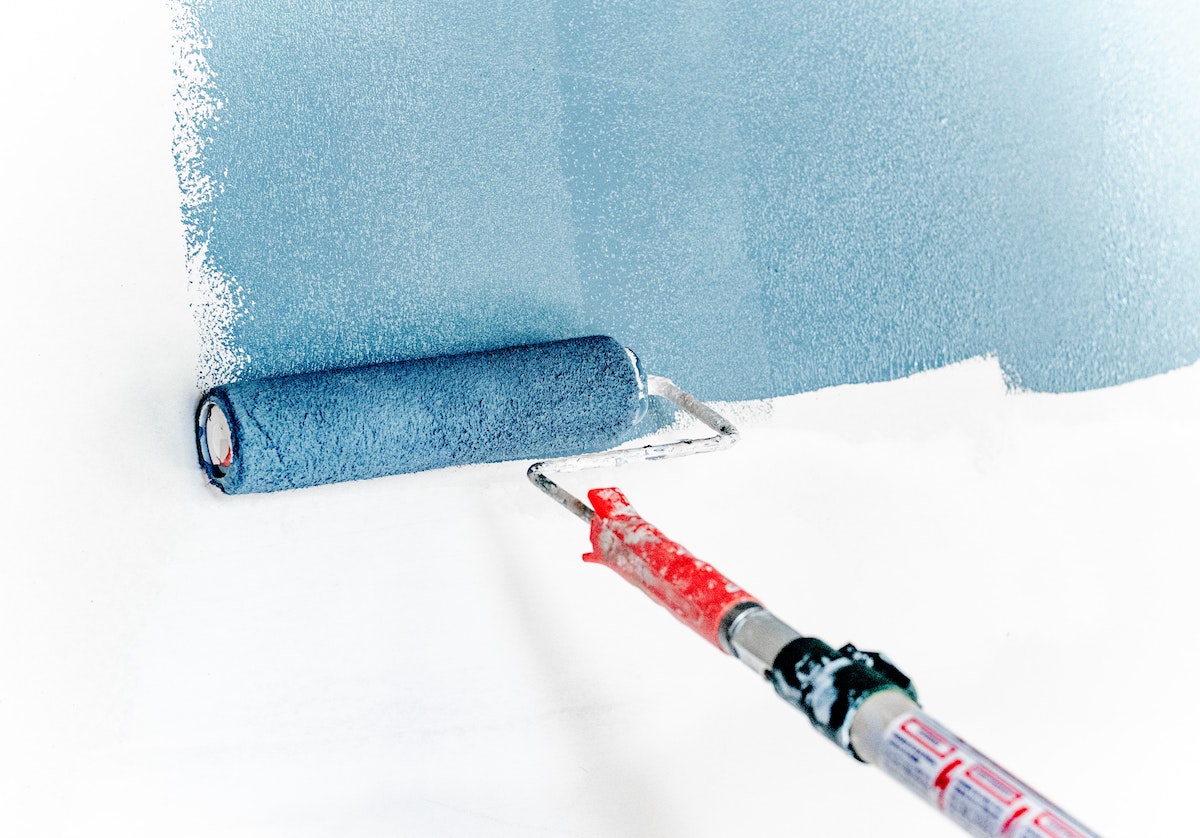When it comes to painting jobs for your home, the paint color isn’t the only consideration. The sheen matters, too.
Today, many paint manufacturers offer a variety of finishes that are perfect for any space. Two of the most popular options for paint finish are satin and semi-gloss. Both finishes are popular for being neither too matte nor too shiny. From afar, it’s difficult to tell who’s who.
Both paint finishes are available in modern latex paints and traditional oil-based paints. Both are also options for cans of paint-and-primer combos and just regular cans of paints. And if we haven’t emphasized it enough, both of them are good for your home.
Still, there are subtle differences between the two that can make one option a better fit for your project compared to the other. So a discussion of satin vs. semi-gloss will help you decide which paint finish is better for your home. This includes considering the color and style of your furniture, the amount of light a room receives and the architecture of your space.
Satin vs. Semi-Gloss: What’s the Difference?
Semi-Gloss
Semi-gloss finishes are popular for their radiant sheen and sleek look. It emphasizes all the architectural details of a room. This finish is perfect for high-traffic areas like mudrooms, foyers, kitchens and bathrooms. It is also suitable for doors, trim and built-ins or cabinets.
Apart from its aesthetic benefits, semi-gloss is a practical choice. It provides an easy and wipeable surface for high-traffic places. After all, the higher the sheen, the easier it is to clean. If you have kids or pets running around, painting your space with higher-sheen paint is the best way to protect your walls.
Where Can You Use Semi Gloss Paint?
As mentioned above, semi-gloss paint is often used on high-traffic surfaces due to its easy-to-clean nature and durability. Also, most homeowners prefer semi-gloss paint due to its moisture-resistant quality.
Use semi-gloss paint to:
- Paint your bathroom walls. It’s always a good idea to paint your bathroom walls with a semi-gloss paint. It can protect your surfaces from stains, mildew and buildup.
- Highlight woodwork. Semi-gloss paint does a good job of highlighting woodwork like frames, windows, front doors and trims. You can also use this finish to emphasize bathroom or kitchen cabinets.
- Make rooms shine. Semi-gloss makes any room shine. They are perfect for exterior walls, gutters, railings, posts and garage doors. If your walls are in excellent condition, use semi-gloss for your hallways, living rooms and kid’s rooms.
What are the Drawbacks of Semi-Gloss Finish?

Shiny as it is, semi-gloss paint can emphasize flaws. If your wall has a dent, the reflective paint lets light bounce off the edges, which makes the flaw more noticeable.
Also, if you apply semi-gloss and the paint streaks, the sheen will be uneven.
Another drawback of using semi-gloss paint is that it can be too bright for an all-in-one paint job, especially for your home. To reduce the amount of light entering your home, you have to use another type of paint (e.g. satin or eggshell).
Satin
If you’re looking for a finish that’s not as shiny as semi-gloss, go with satin paint. It has a versatile sheen that offers an easy-to-clean surface and pearl-like shine.
Satin paint is perfect for adding drama to your trim and walls. If you want to mask any flaws, satin paint is also a good choice. A satin sheen can also add depth to small spaces while reflecting light slightly more than eggshell or flat sheens.
Where Can You Use Satin Paint?
Compared to semi-gloss paint, satin is less glossy. With this quality in mind, you can use satin paint for the following purposes:
- Paint your kitchen walls. Most homeowners prefer a satin finish on their kitchen walls, which is a good idea since satin paint doesn’t shine too much. Plus, it can hide architectural flaws in the walls.
- Paint your bathroom surfaces. A satin finish hides watermarks well. Satin paint is also moisture resistant. So, if you want to protect your surfaces and keep your walls less shiny, go with a satin finish.
What are the Drawbacks of a Satin Finish?
If you’re trying to hide significant dents, steer clear of satin paint. Satin paint can also be hard to touch up. If you paint over a spot, the spot will continue to stand out instead of blending in with the rest of the paint job.
Also, while many satin paint products are durable, they aren’t as moisture- or stain-resistant as other paint options. If you apply satin paint unevenly, the difference will also stand out.
Speaking of durability, satin paint isn’t as durable as semi-gloss, which means it can be easily washed away. If you have pets or kids, this can be a problem since both like to run around and make a mess.
Is Satin or Semi-Gloss Better?

To answer the satin vs. semi-gloss discussion, note the differences between the two paint finishes. These differences will vary on the level of light reflectivity and sheen.
Ingredients
Satin and semi-gloss have different ingredient mixtures. For example, semi-gloss paint has about 50 percent of gloss mixed with the paint. On the other hand, satin paint only has 30 percent of gloss in the mix. As a result, satin paint isn’t as shiny as semi-gloss since it has lower gloss content.
Characteristics
Another factor influencing the semi-gloss vs. satin debate is the characteristics of each option.
Satin paint looks almost like eggshell paint. It easily imitates the looks and sheen of an eggshell. It can also add a subtle shine to your walls. So if you use satin paint, you’ll have a soft, delicate and smooth wall surface.
If you’re not a big fan of bright rooms, a satin paint finish will give you the illusion of smooth and calming walls.
On the other hand, semi-gloss paint offers a shiny finish. When dry, this glossy paint option gives any room a vibrant shine. It is perfect for surfaces that need constant cleaning. Plus, semi-gloss paints can retain color better than the satin finish.
In terms of durability, semi-gloss wins the satin vs. semi-gloss paint discussion. It can endure harsh weather conditions like snow, rain, sun and strong winds. Apart from the weather, semi-gloss can also endure external contaminants like dust, smoke, stains, mold and mildew.
Aesthetically speaking, glossy surfaces attract many eyes. Thus, it will put the spotlight on even the smallest surface flaws like dips or bumps. So, if you want to downplay or hide a room surface, avoid using a semi-gloss paint finish.
Cost
The cost between the two paint finishes is negligible, but you might pay less if you choose satin.
In general, the glossier the paint is, the more it will cost. Semi-gloss paint is made with more binders (which is the resin responsible for its shiny quality) compared to satin. So, if you want to save more money and still repaint your home’s walls, go with satin. It’s a budget-friendly option that offers a hint of sheen.
Paint color is important, but so is the finish. In the debate of satin paint vs. semi-gloss, it’s important to note that both finishes have their sets of pros and cons. To choose the best finish, consider the overall look you want to achieve, the type of room you’re painting, the pre-existing flaws on your walls and the durability you desire.
To determine which paint finish is better for your home, find a professional who can provide you with further guidance.

